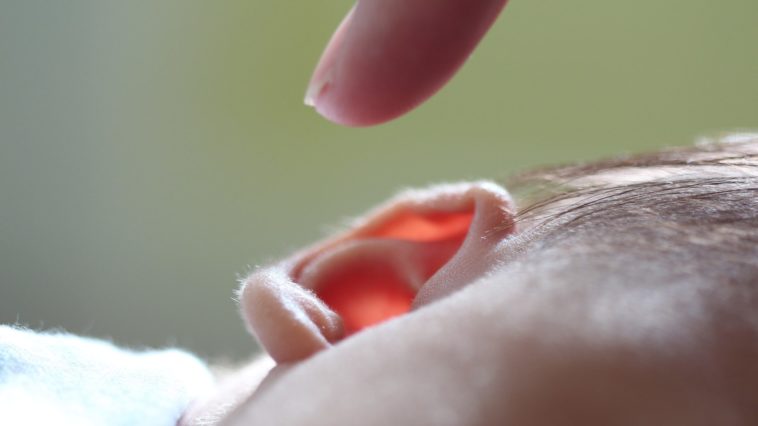How Your Girl Experiences Sight
One of the first things your daughter’s female brain will compel her to do is study faces. Whereas child developmental specialists originally thought all infants came wired for mutual gazing, your daughter maybe more interested in staring at a human face than the newborn male.
Most boys are just as happy to stare at a mobile wire sculpture. At birth your daughter can see, but she can only focus on objects eight to twelve inches away and the object she wants to focus on is you. As parents, we respond to this deep, penetrating gaze. This back and forth dance, daughter to parent, parent to daughter,
strengthens the neural connections that initiated the drama in the first place. Because your daughter responds so well to faces, chances are you’ll be caught making a lot of faces at her. She’ll get better at responding and she might mistake you for a clown. This interchange will reinforce her gazing activity as her brain assigns more and more neurons to support and hone her visual skill.
How Does Your Baby Girl See?
• By six weeks, she can focus at a distance of one to two feet.
• By four months, she can see objects, close or far, about as
well as an adult.
• By six months, she’ll see as well as she ever will.
Observers in the newborn nursery found that even at one day old, on average the girls preferred looking at live human faces while more boys were interested in looking at an object (the moving mobile over the bassinet). In fact, your daughter’s skill in making eye contact increases 400 percent in the first three months of her life while a boy’s interest in staring into his mother’s eyes remains constant. By four months, your daughter will be able to distinguish pictures of people she knows from people she doesn’t. Most boys can’t do that at the same age!
How Does the Eye Work?
• Light traveling into the eye focuses at the back of the eyeball, on the retina.
• There are specialized cells in the retina, rods and cones, that detect light.
• The rods and cones are attached to nerves that collect together in the optic nerve. That nerve sends the information to the visual center of the brain.
• Rods record a scene like a black-and-white TV set. They tell your girl the shape of things, and detect movement. They arevery sensitive to light, and can “see” objects in very dim light (such as at nighttime), but not in color. Each human eye has about 120 million rods.
• Cones are responsible for color and fine detail. Each cone is sensitive to one of three colors—green, red, or blue. Cones only work in bright light, which is why you can’t see colors at night. Each eye has about six million cones.
• Cells in the retina are primed to take in sex hormones, which means that eyes develop differently in girls and boys. Your daughter has more receptor rods and cones in her retina. With this surplus she’s better able to take in the big picture. Your daughter may be better at seeing color and texture, but a male retina may be better at detecting motion. This was confirmed in a study of one-year-olds that found girls preferred films of people’s faces but boys, even at this early age, preferred watching films of cars.
Helping Your Daughter Develop Sight
- Make eye contact. Take advantage of those moments when your girl’s eyes are open and focused on you. Look right into them. Each time she stares at you, she’s building memory.
- Respond to your daughter’s glances. Your daughter takes meaning from every look. Little girls tend not to tolerate flat, expressionless faces.
- Be an observer. Look for moments when your daughter is focusing on an object. Try not to distract her.
- Let her reflect. Have your baby stare at herself in the mirror. At first, she may think she’s just eyeing another cute kid, but she’ll love making the “other” baby wave her arms and smile.
How Your Daughter Experiences Sound
Your girl has been listening to the muffled sounds of your world since the end of your second trimester. If Milo, your family dog, barked at the garbage men, your daughter heard an in utero version of that barking. If her older brothers stormed into the house letting the back door slam behind them as they yelled across the kitchen, she heard that, too. Once born, your daughter is able to demonstrate a superior ability at hearing and distinguishing sounds than most of her male counterparts. A female newborn can distinguish the cry of another baby from the general background noise, but boys in the nursery may not be able to do so. Baby girls respond twice as frequently to loud sounds as boys. MRIs demonstrate that your daughter already uses more of her temporal lobe to hear than the boy next door. So it may be that the age-old parenting strategy of soothing a fussy girl by softly cooing and humming has its origins not in social stereotyping but in Mom’s innate understanding of her daughter’s biology.
How Does Your Baby Girl Hear?
• The outer ear, the part you can see and that you carefully bathe, collects sound and funnels it inward to the eardrum.
• When sound hits the eardrum, it causes three tiny bones in the middle ear to vibrate.
• These bones transfer their vibrations to the cochlea, the snail-shaped hearing organ in the inner ear. The cochlea is filled with fluid that moves with the vibrations. This stimulates tiny hairs in the cochlea.
• When the hair cells are stimulated, nerve impulses are generated that are sent along the auditory nerve to the temporal lobe, the part of the brain that is the hearing, speech, and memory center.
We have known for years that the majority of girls demonstrate superior hearing from birth on. Recently, technology has been able to give us a hint as to why this is. Girls are born with a shorter and more rigid cochlea. This difference makes a girl’s hearing organ a more sensitive response mechanism than most boys of the same age.
Helping Your Girl Develop Hearing
- Blab away. Your daughter needs you to react. Even though she is more skilled at hearing, she still needs your attention! When you’re talking to her, leave short pauses where your girl would respond. Keep talking. She will catch on to your rhythm and will fill in the silent spaces.
- Dads, modulate your voices! What may seem like normal banter to a father can be heard as a loud boom in your daughter’s ears.
- Activate her auditory wiring. Brain connections are built and strengthened when we use them. The more you repeat sounds, the more your girl’s faint neural connections become fortified. Her auditory synapses will multiply steadily from nine months to two years.
- Don’t rely on TV and videos. Your daughter’s brain learns best by interacting—hands-on, or in this case, “ears-on.” Having music on in the background with you chattering in the fore is much more interactive than turning on an educational video.




